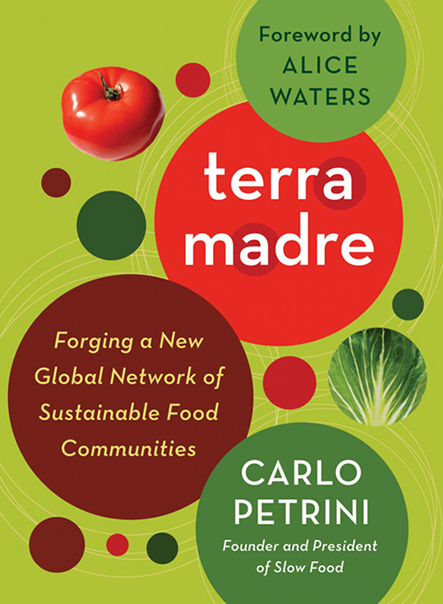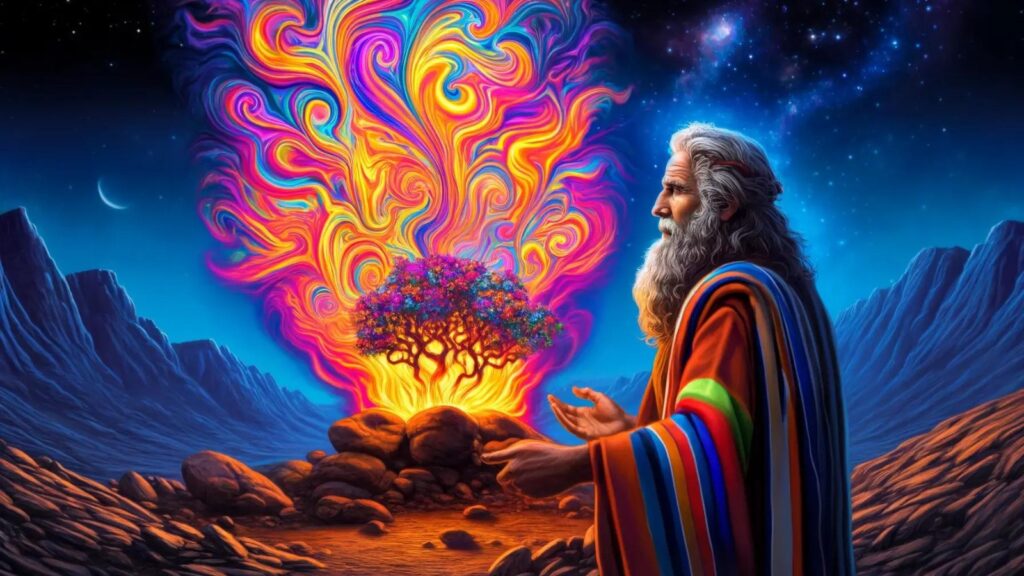The following is excerpted from Terra Madre: Forging a New Global Network of Sustainable Food Communities, available from Chelsea Green Publishing.
Terra Madre first appeared on the global political and economic scene in 2004. It began as a large meeting of people from all over the world, but soon turned into a permanent network — or rather a number of networks — whose members work day by day, wherever they happen to be, to create a new economic, agricultural, food, and cultural model.
Terra Madre is a concrete way of putting into practice what has been defined as "glocalism": a set of actions carried out on a local scale to generate major repercussions on a global scale. It has evolved over the course of time and now has a policy of its own, shared values, and medium- and long-term objectives. Terra Madre is thus much more than just a biennial get-together (the organization of which is, I might add, a mammoth task). It is also a world network of local food communities, the living, breathing embodiment of the ideas I am about to set out. Let me begin by describing Terra Madre's distinctive features, its history, and the activities it seeks to and can perform.
Once you have understood what this great network is, the ideas and philosophy behind it will acquire a different flavor and a greater depth. Above all, you will appreciate how they are closely bound to the real world and to a heterogeneous mass of men and women, all working on a common project.
There is a lot of talk these days about the need for a new system of world governance. It is now clear that we cannot rely solely on the governments of the strongest nations and the potentates of the economy. We also have to make overtures to the political representatives of the countries of greatest demographic importance, nongovernmental organizations, and all the major large-scale movements that work in the areas of the environment, social justice, and volunteerism.
This is why I believe that Terra Madre, which will seek to increase and consolidate its political status over the next few years, stands for the future. It is an open network that welcomes anyone who shares its ideals, even if they do things differently or work in diverse geographical and operating contexts. It embodies a new approach to the production, processing, distribution, and consumption of food, drawing liberally on the history of the world's populations, but also looking ahead. It's conscious of the mess we have gotten ourselves into, but it's not afraid of the future.
How the Idea of a Terra Madre Network Was Born
"We've got to organize a large meeting of small-scale farmers, the people who work the land in every corner of the globe. Let's invite thousands of them to Turin. All we have to do is find the resources to get them here. They'll see to the rest, they'll provide the content. And I want everybody to be represented: not only Europeans and North Americans, but also people who live in the most far-flung villages in Africa and South America, people who have never left their fields in their lives before. What's important is that they have three things in common: that their labor helps save biodiversity, that they work in harmony with the earth, and that they produce good food."
It was a morning in late 2003 and I was talking with my closest collaborators. You should have seen their faces! Their mixed reactions were a perfect reflection of their different personalities. But all of them were shocked by the sheer number of people I intended to involve in the event. In an instant, they began speculating about the type and amount of work that was lying in store for them. The machine went swiftly into motion: some people set out to raise funds; others began to figure out how a meeting of this kind might work. We immediately came up with a name for the event: Terra Madre, in honor of Pachamama, the South American Indian name for the Earth Mother venerated by millions of farmers and peasants all over the world.
My idea was inspired by the Slow Food Award for the Defense of Biodiversity, which, from 2000 to 2003, we had presented to farmers, fisherfolk, and food artisans whose daily labor had helped save small fragments of biodiversity: an animal breed, say, or a native plant variety or maybe a traditional way of turning nature into food. A dozen or so people received the award each year; they were chosen by a jury from a short list of hundreds of nominations put forward by a network of almost seven hundred journalists in about eighty different countries. These journalists — a diffuse network of professionals having the wherewithal to gather and evaluate stories of rural people and traditions and sensitive enough to evaluate their importance — formed the real backbone of the event. It was they who introduced us to a multitude of wonderful human beings whom we contacted and met during our travels overseas on Slow Food business.
Under the award regulations, this network of journalists had to meet at the award ceremony every four years, and organizing such a "happening" was no mean feat. The first Slow Food Award ceremony was held in Bologna in 2000, the second in Oporto in 2001, the third in Turin in 2002, and the fourth in Naples in 2003. The journalists all came together in a large plenary gathering at the first ceremony in 2000, but from 2001 to 2003 only the winners were present. In 2004 the time had come to organize the journalists' meeting again.
It occurred to me that, with the same outlay of funds and resources, instead of the journalists, we could invite thousands of farmers — who, after all, were the true heroes of their fantastic stories. We would be able to introduce them to one another, give them the chance to travel, let them see a different world, and make them feel pride in the hard but skilled jobs they do every day. Hence the idea I threw at my collaborators. I was confident that all we had to do was raise the funds to pay for travel expenses and take care of the logistics. I knew that the civic and religious groups and, above all, the farmers of Piedmont, my region of Italy, would be only too willing to help me arrange sleeping accommodations for our guests. There's no point in obliging farmers to stay in grand hotels, as if they were normal conference goers. These farmers possess a great sense of dignity, and they know how to adapt but, in many cases, they've never traveled before. Who knows, they might feel ill at ease in an anonymous hotel room. I felt sure they would be happier finding out about farming and talking to their counterparts around the Piedmont region than being seduced by the attractions of international hotel chains.
By utilizing the Slow Food Award journalists' network, the 80,000 members of our association worldwide, and the many food producers involved in our projects to defend biodiversity — such as the Ark of Taste and the presidia [1] — and after a painstaking selection process, we began to send out invitations. We chose October 20, 2004, as the date for the event so that it would coincide with the biennial Salone del Gusto (Salon of Taste).
Since 1996 we have staged the Salone, a major international event, at the Lingotto Fiere Exhibition Center in Turin. A showcase for the food of Italian and international producers who comply with the Slow Food philosophy, it has always been a huge success with the public. What better moment to invite along peasants and farmers — the hands and minds that are the creators behind the wonders to be found at the Salone del Gusto? And why not seize the opportunity to let them visit the Salone, a point of reference for international gastronomy? It would be an encounter between visitors and quality food producers and thousands of farmers from all over the world: the people who, through their toil — and despite difficulty, poverty, and sometimes dramatic living conditions — manage to give us our daily food. It was a chance not to be missed, a chance to raise awareness of these people's problems and their fight for civilization.
It wasn't easy to organize the event. Imagine what it means to move 5,000 people, many of whom are not used to traveling, from sometimes remote villages, and book flights, arrange accommodations, and organize domestic transportation for them. In the end the meeting thankfully went off without major hitches and turned out to be a resounding success. With the help of national and local institutions, we raised the money needed to pay for the journeys of all those — the vast majority — who couldn't afford them. I was particularly moved by the way in which Piedmontese farming families were prepared to offer hospitality to delegates. On October 20, 2004, at the Palazzo del Lavoro fair hall in Turin, about 5,000 people from 130 countries met in plenary assembly, while just a stone's throw away, at the Lingotto Center, tens of thousands of people were simultaneously visiting the Salone del Gusto.
There were peasants and farmers present at the gathering, but also fishermen, artisans, shepherds, and nomads: no trade-union representatives, no association leaders — just people who work the land and sail the seas to produce food for all of us.
These people had come to Turin to represent their communities, which we decided to define as "food communities." Food communities could be groups of producers from the same place making the same or complementary products; groups born of alliances among growers and processors; or entire local food-supply chains. In short, the 5,000 present in Turin were representing a number of people at least a hundred times greater. It would only be stretching things slightly to say that they formed the biggest food multinational in the world.
Over the four days of Terra Madre 2004, the food communities present were encouraged by the likes of Charles, the prince of Wales, and Vandana Shiva, to celebrate together by day and in smaller groups by night in the Piedmontese villages where they were staying (and where they had a whale of a time sampling the food and wine and finding out about local agriculture). At the event, theme workshops addressed common problems and motivated participants to exchange their experiences. That's the only part of the event that Slow Food actually organized. What we attached most value to were the participants' journeys — the opportunity we were giving them to set out and discover a different part of the world and a different kind of agriculture — and their meeting together, which was a chance for them to represent their culture and feel pride in their own identity — identity being defined by differences. We knew that such a coming together of diverse people and cultures was going to have unpredictable results, so we confined ourselves to seeing that the community delegates were well looked after.
We weren't wrong in our assumptions, because the most wonderful things did happen. Though we had arranged for simultaneous interpreting in seven languages, farmers from different countries readily improvised conversations, gesticulating to explain their techniques, their crops, the characteristics of their land, and so on. And they understood each other! What better demonstration was there of the fact that no borders or barriers exist for people who love, know, and work the land? In many cases, the relationship between hosts and guests turned into genuine friendships. Many Piedmontese farmers have since gone to visit the communities of the people they hosted. Many others have kept in touch either out of friendship or because, albeit in different corners of the planet, they are engaged in similar battles, or because they need to seek information or follow experiments or exchange agricultural techniques. The network of friends that came into being went beyond our wildest dreams. Even before the various communities left Turin, we realized that we had a new global network on our hands, capable of acting locally but also of rallying as one: a collective made up of people who, until a short time before, had felt they had been left to fight a stoical but losing battle all on their own. A hope was born: in them, in us, and in all those who had seen us at work.
People who had said we were crazy for wanting to organize an event of this scale and scope were forced to eat humble pie. We too were pleasantly surprised to find ourselves involved in something that was even larger than we had imagined. True to form, our first thought was to up the ante: to involve more and more people and open up the network according to our holistic vision of the world of food: a vision in which agriculture, cooking, economics, history, and science subtly interconnect; in which different forms of knowledge, functions, and abilities cross over systemically; in which there is no place for reductionism and mechanism.
Thus in 2006 we enlarged the Terra Madre agenda to include culinary know-how and the dialectics between modern science and traditional knowledge. Besides the representatives of food communities, we invited 1,000 cooks — from Michelin-starred chefs to village innkeepers — and asked them to compare their experience with that of the people who produce food. By undertaking to use the produce of the communities closest to their establishments, to a certain degree these cooks became members of the communities themselves. In the United States, for example, an ever-increasing number of chefs and cooks are committed to using fresh, seasonal, sustainably produced ingredients. And, along with cooks, to Terra Madre 2006 there also came about 250 representatives of universities that had pledged to research and reappraise popular and traditional knowledge, to put old and new on the same level without prejudice. In the end, almost 9,000 people turned up in Turin, this time at the Oval, a structure built for the 2006 Winter Olympics and adjacent to the Lingotto Fiere Exhibition Center, again in conjunction with the Salone del Gusto. The opening ceremony was attended by Giorgio Napolitano, the president of Italy. The network was growing, and increased media attention was helping the public to appreciate its importance.
In 2008, Terra Madre's farmers, cooks, and academics were joined by rural musicians, inheritors of the oral and musical traditions that have always accompanied labor, the seasons, the rites of passage, and the convivial celebrations of the countryside. Music too is part of the world of food and peasant culture and embraces forms of diversity that deserve to be saved. In 2008 we also asked communities to bring their young members; for it is they who have to assume the huge responsibility of assimilating the knowledge handed down to them and continuing to tend the land of their ancestors. But it is also they who can provide hope for the future of the planet. Last but not least, we invited natural-fiber producers who, in the countryside, work side by side with food producers and address similar problems, such as soil erosion, competition from industrial products and manmade fibers, loss of biodiversity, and the inequitable laws of the market.
Today, after the third event, the Terra Madre network consists of about 1,600 communities from 153 countries. It now also includes the thousands of young people who have joined the Youth Food Movement, a groundswell that began in American universities and has since spread internationally. Their pledge is to improve cafeteria meals, to promote food systems education, and to encourage and support peers who plan to become farmers. The number of cooks and academics involved is growing, as is the geographical spread of the phenomenon.
The network is further bolstered by Slow Food, whose members every day seek out food that is better for themselves and for the earth, and who are engaged in alternative forms of distribution such as the Earth Markets [2] or the creation of school gardens and other educational projects designed to defend biodiversity.
Not that the network will end here. We also intend to promote local meetings and education programs, as well as national Terra Madre events (several of which have already been staged over the last few years). In this way, we will strengthen the network and foster the circulation of ideas and constant media impact. Of central importance from this point of view was Terra Madre Day on December 10, 2009 — the twentieth anniversary of the founding of Slow Food — when food communities celebrated Terra Madre on their home turf with small- and large-scale initiatives dedicated to the subjects of food sovereignty and the local economy. From now on, we also intend to involve community-supported agriculture (CSA) in North America and similar models of food distribution around the world — such as Gruppi di acquisto solidale (GAS), or fair-trade shopping groups, in Italy, and the Association pour le Maintien d'une Agriculture Paysanne (AMAP) (Association for the Maintenance of Rural Agriculture) in France — on a more structured basis.
In our holistic vision of the world of food, the life of rural and food communities is closely connected with, among other things, distribution, communication, memory, dress, quality of life, and building techniques. No attempt to enhance agro-gastronomic heritage can ignore the fact that all these elements are interlinked. Take language, for example. Some 5,900 indigenous languages spoken by 3 percent of the world's population-most of whom are members of our food communities-are at risk of disappearing. A language encapsulates a worldview, and its words describe traditions and methods of working, as well as tools, utensils, and natural phenomena. Like food and traditional ways of producing it — not to mention selling, celebrating, storytelling, and preserving collective memory-language is part and parcel of the cultural identity of food communities.
Through Lingua Madre (Mother Tongue), a project we are developing in conjunction with the Piedmont Regional Authority, we are striving to save ancestral languages, besides promoting the positive values of intergenerational collaboration, which values the wisdom of the older generation — an intellectual treasure trove that would otherwise be at risk of disappearing. It is the whole local system that needs to be protected, preserved, and held together, not just a part of it. And it's a system that gravitates around one huge sun: food.
Notes
[1.] Slow Food presidia are small-scale projects designed to safeguard biodiversity and traditional food products at risk of extinction. There are currently 177 presidia in Italy and 121 in another 46 countries. The projects involve more than 10,000 small producers: farmers, fishermen, butchers, shepherds, dairypersons, bakers, confectioners, and so on. They are concrete, virtuous examples of a new model of agriculture based on quality, the recovery of traditional knowledge, respect for the seasons, and animal well-being. They support and promote quality food products that are: good to eat and typical; clean, made using sustainable techniques and with respect for the environment; and fair, made in conditions respectful of workers, their rights, and their cultures, and with a decent guaranteed wage. They reinforce local economies and help forge a strong alliance between producers and consumers. The presidia are promoted and coordinated by the nonprofit Slow Food Foundation for Biodiversity and are part of the Terra Madre food community network.
[2.] For more information about Earth Markets click here.
Teaser Image courtesy of NASA/Goddard Space Center.









